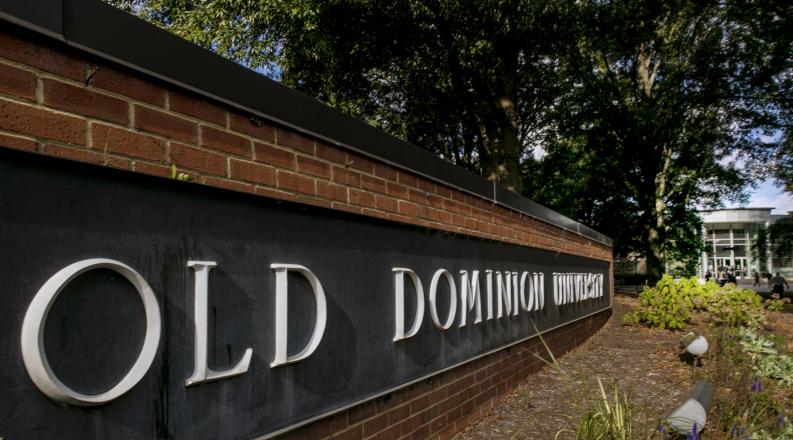By Annette Finley-Croswhite
The Office of Academic Affairs is pleased to announce funding for three new Course-based Undergraduate Research (CURE) projects. The CURE program aims to generate active learning in the classroom by embedding the research process into course curricula. Studies indicate that students who engage in undergraduate research develop higher-level critical thinking skills and discover new knowledge.
The CURE proposals were reviewed by a CURE committee consisting of Annette Finley-Croswhite, Professor of History and Director of the Center for Faculty Development, M’hammed Abdous, CFD Associate Director of Faculty Innovation and Teaching with Technology, Wayne Hynes, Professor of Biological Sciences and Associate Dean in the College of Sciences, Lin Guo, Associate Professor of Marketing, and Cathleen Rhodes, Master Lecturer in Women’s & Gender Studies. Both Guo and Rhodes are former CURE grant winners. As Director of the CFD, I want to extend my thanks to the review committee for their work with the CURE review process.
The 2024 winners are listed below with their project abstracts. We look forward to learning more about these projects next semester. At the Center for Faculty Development, we congratulate these CURE grant winners.
Angela Wilson, Clinical Assistant Professor. Medical Diagnostic & Translational Sciences, "Investigating Bacteria isolated in Dental Caries of Siblings." Dr. Wilson will receive $1442.58 in CURE monies with an additional $480 in support from her department chair and college dean. The funds will be used for lab equipment and conference travel.
"Clinical microbiologists provide essential clinical information to allied health professionals that directly affects patient outcomes. Clinical microbiologists also provide valuable data to public health sectors that help shape public health recommendations, provide knowledge, and analyze trends. It is difficult to capture this unique role of the clinical microbiologist in the student laboratory setting. This project aims to engage students in an experiential, collaborative, project-based curriculum innovation that includes dental hygiene, clinical microbiology, and public health personnel. With the assistance of dental hygiene faculty, students will organize primary teeth and identify primary dental caries in sibling populations. After classifying teeth with caries, students will culture donated de-identified primary teeth with caries and definitively identify the cavity causing bacteria. The instructor will provide demographic data to the students in computer file format matching their assigned specimens. Finally, students will work with a public health personnel to examine demographic and bacteriology culture data for correlations and trends among the sample population. Students will analyze results based on sibling demographic data, the prevalence of primary dental caries, and frequently isolated bacteria.
This curriculum innovation allows students to engage in the clinical microbiology lab and experience how their work contributes to recommendations and public health policies. MLS students will experience and fell more connected in their future roles as clinical microbiologist in the lab and as contributors to public health.”
Robert Strozak, Master Lecturer, Mathematics and Statistics/Katie Rafferty, Senior Lecturer Mathematics and Statistics, "Undergraduate Research in Baseball Analytics." Strozak and Rafferty will receive $2000 in CURE monies with a total of $2690 in matching funds coming from their department chair and college dean. The funds will be used for summer stipends and for necessary baseball analytics certifications.
“Recently, Old Dominion University’s baseball team has requested the assistance of the math department in the development of baseball analytics. To provide support for this, the course MATH 494, Entrepreneurship in Mathematics, will be offered in Fall 2024. Within the course, the students will:
- Learn the basics of baseball analytics (also known as “Sabermetrics”),
- Learn how to generate analytical baseball reports in the R programming language and develop proficiency by using field data from ODU’s baseball team,
- Learn how the Trackman© system tracks each pitch and how its data is used to support baseball analytics,
- Meet with staff members of the baseball team to gain better understanding of the data used in the reports,therefore improving, and creating more novel reports.
For each student, the final project of the course will be a set of reports requested by the baseball team. After completion of MATH 494, the students will be prepared to become members of our “Data Analytics Team,” which will work with the baseball team the following Spring. The goal is to offer MATH 494 every Fall to provide a pipeline of undergraduate researchers to provide analytics to the ODU baseball team and to function as a long-term incubator of undergraduate research in the Mathematics Department.”
Margaret Mulholland, Professor of Ocean and Earth Sciences, "CURE: Training Students to Analyze Segments of Large Environmental Databases to Further Harmful Algal Bloom Research and the Development of Alert Systems." Mulholland will receive $2000 in CURE monies with a total of $4000 in matching funds coming from her department chair and her college dean. Funds will be spent on IFCB Training (Imaging Flow Cytobot—IFCB, an automated imaging flow cytometer).
“This proposal is aimed at transitioning an existing 1 credit undergraduate laboratory course (OEAS 307) into a fully developed 3 credit CURE course in Environmental Science and Oceanography. While targeting undergraduates in OES, this course should be of interest to students in Biology and Chemistry. Multidisciplinary aquatic sampling and data analysis are already integral parts of the existing OEAS 307 course, and the proposed CURE transition will enhance and expand sampling and data analyses to develop publishable products. Initially, this course will be centered around harmful algal blooms (HABs) and the environmental conditions that promote them. This topic is highly relevant as HABs have been increasing worldwide and their impacts on aquatic ecosystems, fisheries and human populations can be severe. In the lower Chesapeake Bay, physical, chemical, biological, and geological processes combine to control the timing, magnitude and duration of blooms making this an ideal topic to build upon for the proposed CURE. Further, there are several long-term databases that can be used to develop group projects that examine climate relevant changes in the environment and the occurrence of HABs over time.”



